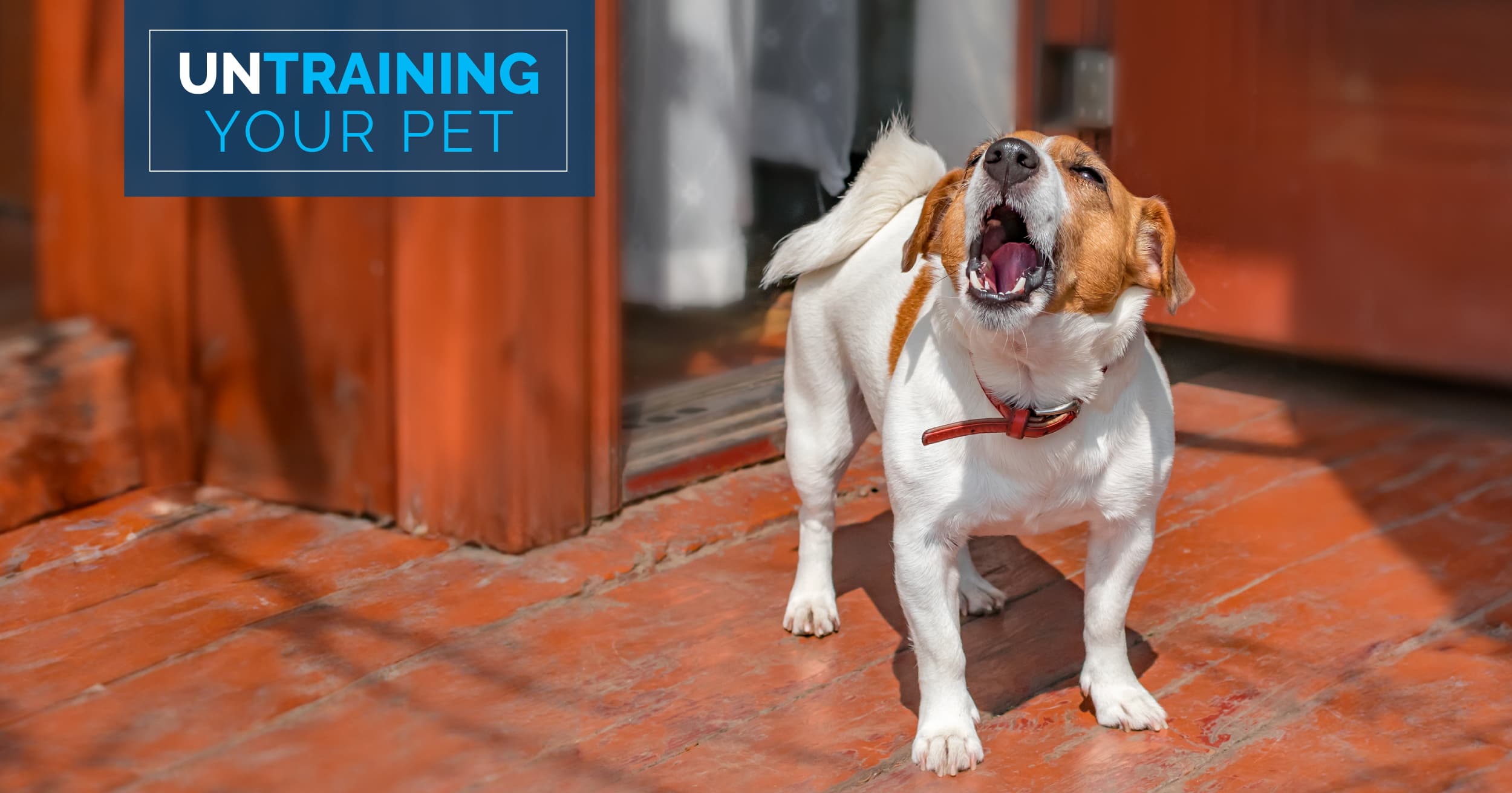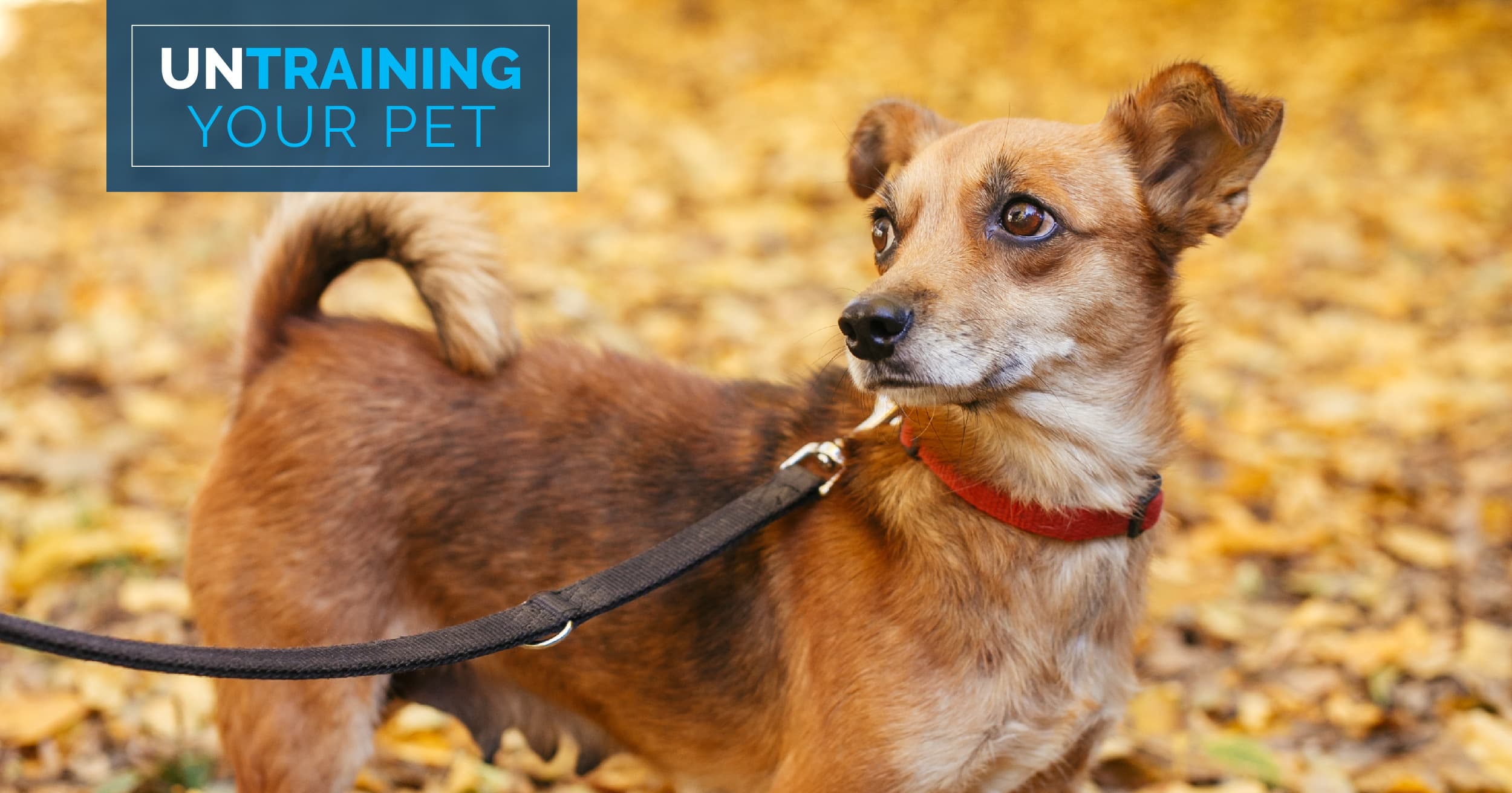Welcome to our “Untraining Your Pet” series, where we help you “untrain” your pet from those naughty or annoying bad habits and get them back to being the goodest boys and girls.
Ding-dong. Uh-oh, here comes the barking. Does the whole neighborhood know when you get a delivery? Are your visitors greeted with a doggy chorus? You may be able to tolerate these occasional ding-dong sing-alongs, but what happens when Halloween, the ultimate doorbell-ringing night, arrives? Don’t fear, there is a solution for your dog’s barking other than leaving a bucket of candy on the porch.
Barking at the doorbell is a common reaction for dogs, but it doesn’t have to be that way in your home. We’ve got some tips to help untrain your dog from barking at the doorbell and teach them that ding-dong is a cue for sitting quietly.
Why Do Dogs Bark at the Doorbell?
There are usually two reasons why dogs bark at the sound of the doorbell: anxiety or excitement. For some dogs, the doorbell can trigger anxiety due to a fear of the unknown. Who’s behind that door? Friend? Stranger? A tiny human dressed as a veterinarian? If your dog is afraid of people, to them the doorbell means you’ll open the door and let “scary” people into their home. You can learn more about the reasons why some dogs fear people and how to help them in our article, “Why Is My Dog Scared of People?”
On the other paw, if your dog is a social butterfly and loves having people visit, the doorbell may get them excited about who’s coming over. Is it the one who always brings me a treat? Or the one who knows just where to scratch my belly? Or is it someone delivering my favorite treats? So many things to be excited about, but it is possible to teach your dog to stay calm while you make your way to the door. Here are a few ideas to help you.
Trick Then Treat All Year Long
This first method aims to train your dog to go to a designated place and quietly wait for a treat when you say a specific phrase. The idea is that when the doorbell rings, you say that phrase and instead of barking at the doorbell, your dog goes to sit and wait for their treat. It helps to make their special place on the way to the front door, but also far enough away that you don’t have to worry about them sneaking out. This “trick” also means your visitors can enter the house without getting bowled over by an excited dog.
The first step is to choose a phrase that you’ll remember to say when you hear the doorbell. It could be “Just a minute” or “Be right there” if you think your visitors will hear you, or something a little more fun like “They’re here” or “Places everyone.”
With a high-value treat in hand, say your phrase, lead your dog over to their quiet place and offer the treat once they’re sitting. Keep practicing this and say the phrase in different places in your house since you could be anywhere when the doorbell rings. Eventually they should learn that when you say that phrase, they should go and sit in their quiet place and wait for a treat.
Next you want to add the doorbell. You may find it easier to record the doorbell on your phone so you can play the noise without going out to ring it. Or you can ask someone to help you. Say your phrase immediately after the doorbell rings and praise and reward your dog if they go to their quiet place. To start with, you may need to lead them over to their quiet place again if the doorbell distracted them. The goal is that they turn their attention away from the doorbell as soon as you say the cue because they know they’re going to get a special treat.
Use the Doorbell as the Cue
The other training method you can try is using the doorbell as the cue for your dog to go to their quiet place. Start with a high-value treat that they can eat while you’re holding it, like a frozen treat or a treat-filled toy. While they’re eating it, play the doorbell noise and praise them if they pay attention to the treat not the noise. Once they’re no longer barking at the doorbell, play it first and then give them the treat (if they don’t bark).
Once they associate the doorbell with a treat, you can lead them over to their quiet place like we described above. Instead of using a phrase as the cue to go to the quiet place for a treat, the doorbell is the cue. Whichever method works best for you, it’s a good idea to keep treats on the way to the front door so you always have them ready whenever the doorbell rings.
While Your Dog’s in Training
Training your dog to react positively and quietly to the doorbell will take lots of practice and time. While your dog’s learning their new skill, ask your visitors to ignore them if they’re barking and to wait until they’re calm and quiet before they pet them. You may also need to put up a “Please knock” sign until your dog learns to stop barking at the doorbell.
If you’re having a party or it’s Halloween and you’re expecting a lot of front door traffic, it might be best to keep your dog in a room away from the front door. Otherwise your dog could end up in treat overload. Remember that no more than 10 percent of their total daily calories should be from treats.
Training your dog to stop barking at the doorbell can help them feel less stressed about visitors arriving at your home. It can also help your visitors feel more comfortable about entering the house since they don’t have to wonder how friendly the barking dog is.
RELATED POST: Untraining Your Pet: No More Jumping on People
Source link: https://www.diamondpet.com/blog/behavior/training/stop-your-dog-from-barking-at-doorbell/ by Content Woodruff at www.diamondpet.com






